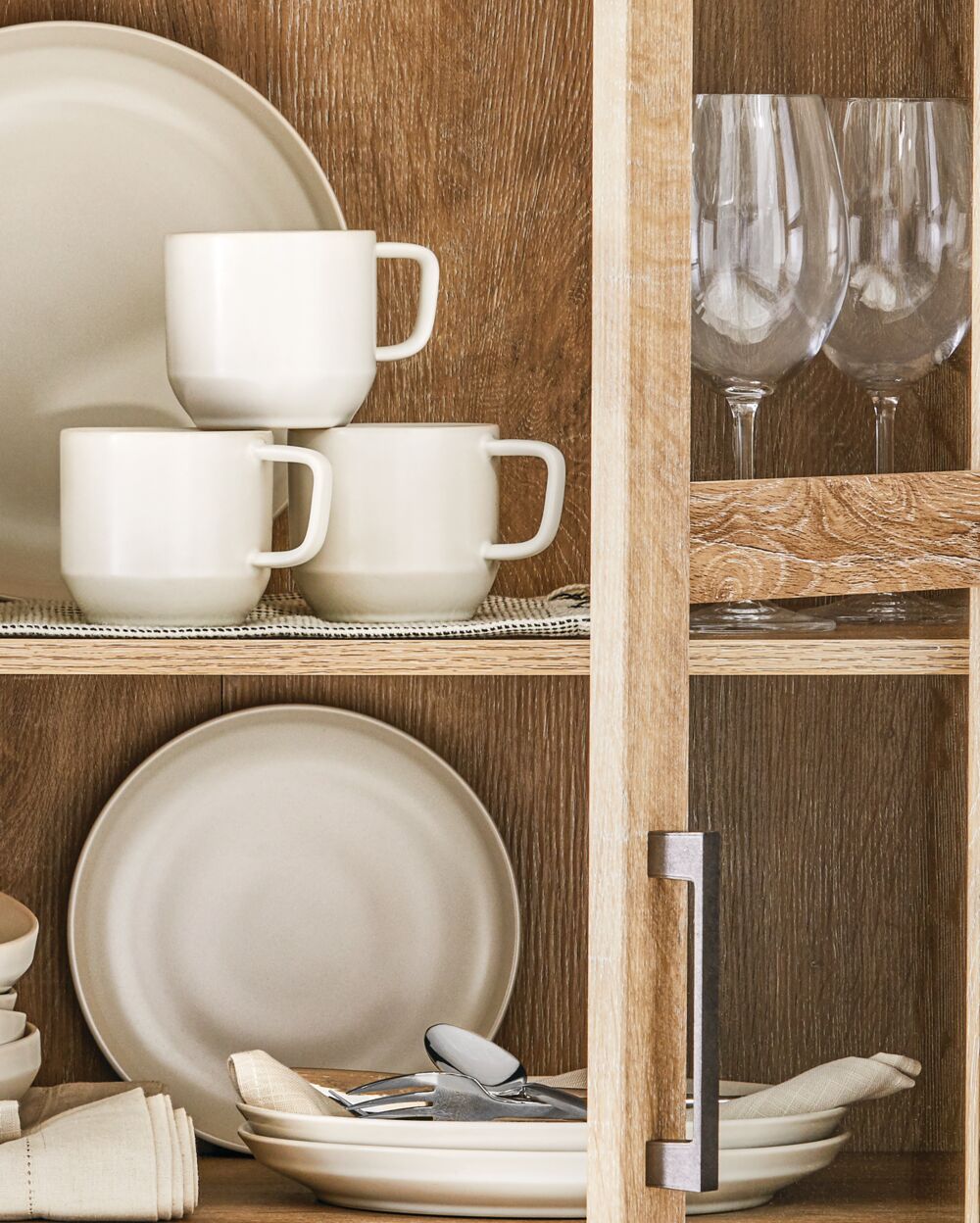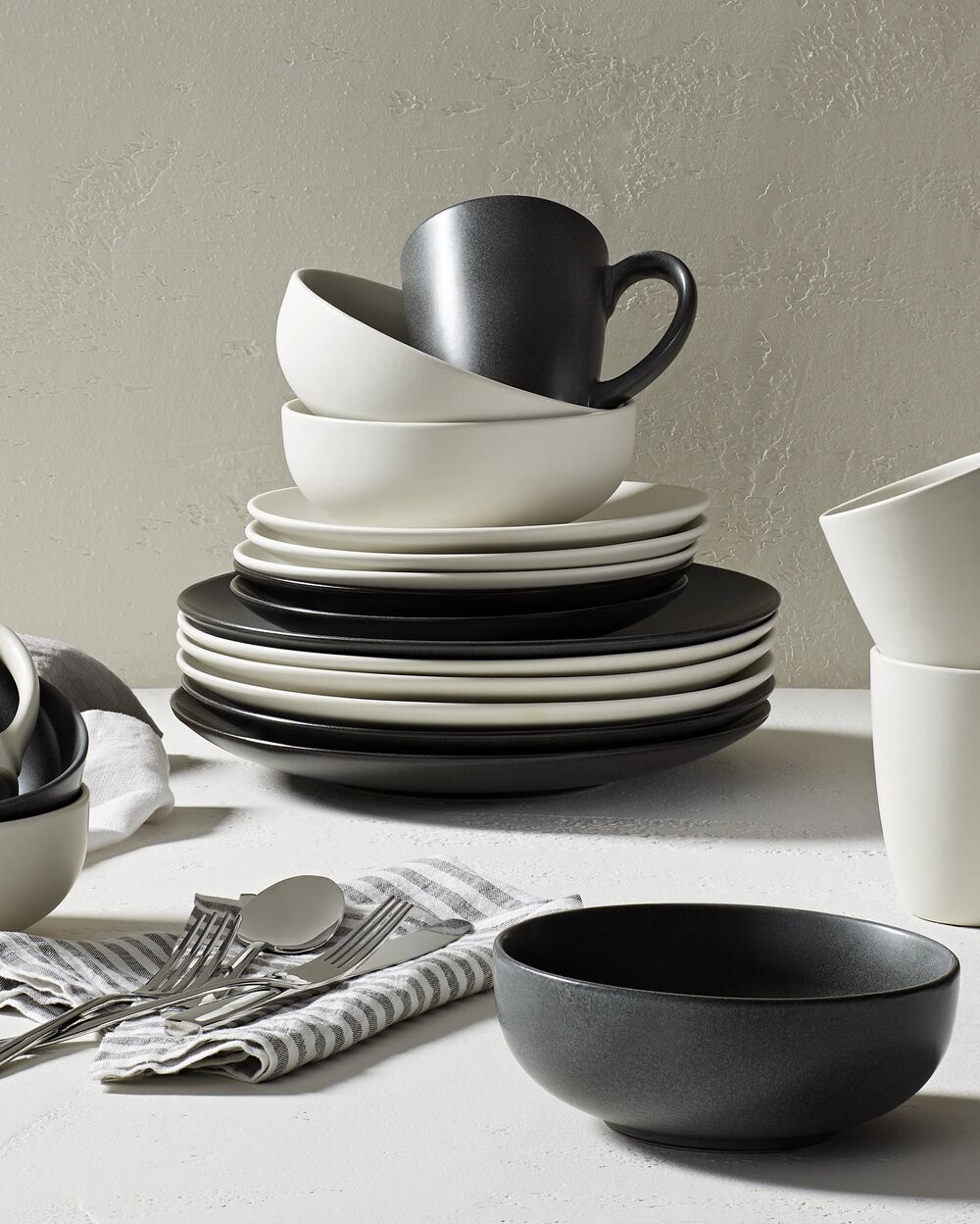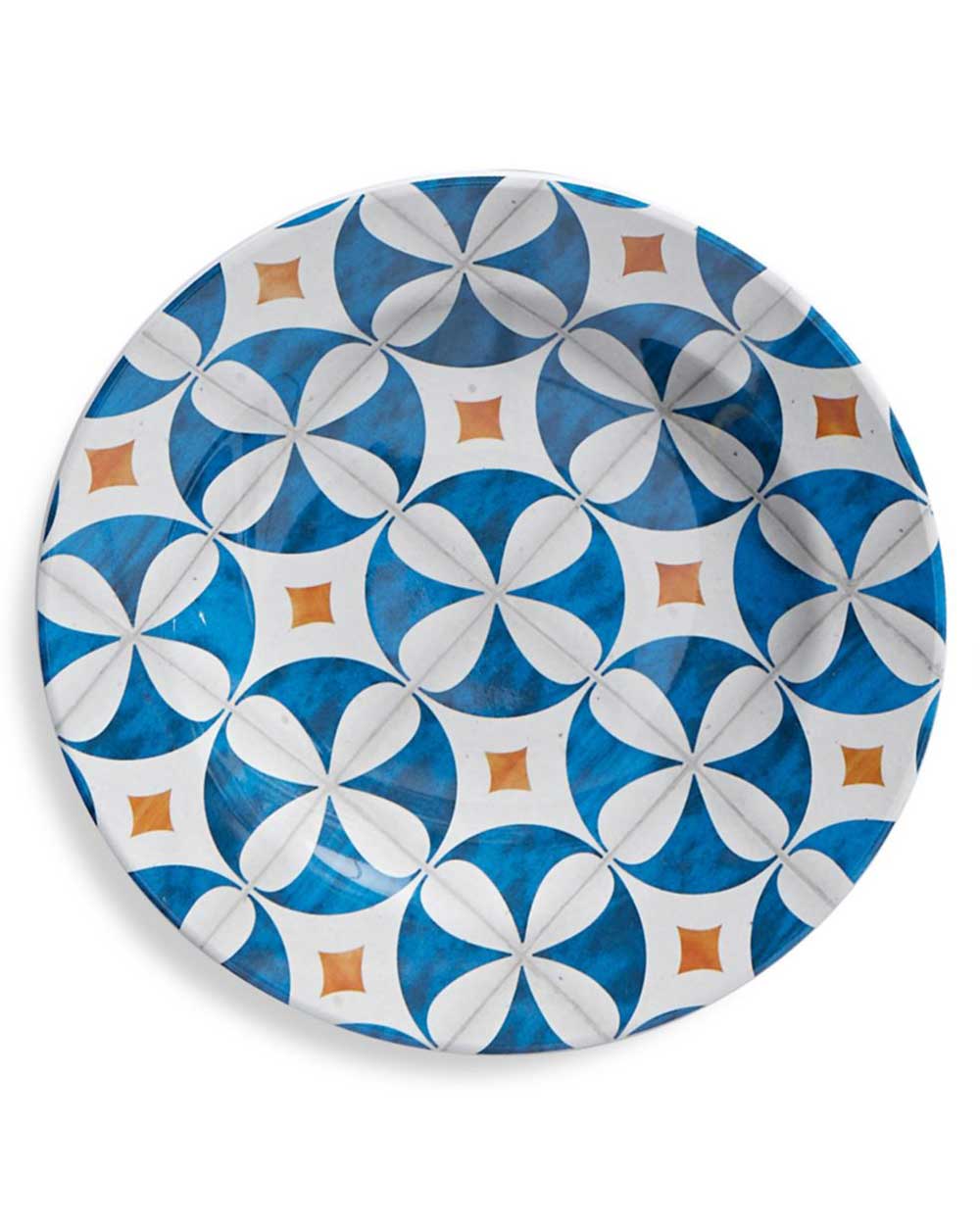
Whether you’re setting the table for a quiet breakfast or hosting a celebratory dinner, dinnerware plays a key role in the look and feel of your space. It’s something you use every day—so it makes sense to find a collection that suits your lifestyle and reflects your personal style. This dinnerware guide walks you through the different materials and formats to consider before you start shopping.
Bone China
Lightweight and refined, bone china is the most durable option in the fine dinnerware category. It has a delicate look with a slightly translucent quality, but don’t let that fool you—it’s strong enough for daily use. While traditionally associated with formal dining, many bone china patterns are dishwasher and microwave safe, making them a practical everyday choice.

Porcelain
With a glossy, almost glass-like surface, porcelain offers a sleek finish that feels timeless and elegant. It’s more durable than stoneware and generally less expensive than bone china. Porcelain is a great all-purpose material that works just as well for casual dinners as it does for more formal affairs. Most porcelain dinnerware can go in the microwave and dishwasher, unless it features metallic detailing.

Stoneware
Heavier than porcelain, stoneware is known for its durability and laid-back appeal. It often has a matte or glossy glaze in rich tones that bring warmth to the table. This material is ideal for everyday meals and looks beautiful when layered with lighter neutrals or mixed textures.

Melamine
For outdoor gatherings or meals with little ones, melamine is a go-to. This shatterproof material is sold most often in warmer months and comes in a wide range of styles and colours. Today’s melamine dinnerware has stepped up its design game, making it both stylish and practical.

Formats to Fit Your Needs
Once you’ve chosen a material, think about how you want to build your dinnerware collection. This part of the dinnerware guide covers the main formats available:
Place settings: Typically sold in three- or five-piece configurations, place settings include the core items each guest will need. A five-piece set usually contains a dinner plate, salad plate, bread plate, cup, and saucer, while a three-piece setting may include a dinner plate, salad plate, and bowl.
Boxed Sets: If you’re furnishing your table for four or more, a boxed dinnerware set is a simple solution. A 16-piece box set typically includes four dinner plates, four side plates, four bowls, and four mugs. Larger families or frequent hosts may want to look for 32-piece sets for added convenience.
Open Stock: Some collections are available as open stock, allowing you to purchase items individually. This is ideal if you want to replace broken pieces, mix and match different styles, or buy a few extras for guests. Open stock also offers more flexibility for those who like to refresh their tabletop look with the seasons.
With so many styles and options available, finding the right dinnerware can be as enjoyable as it is practical. Whether you lean toward timeless bone china or love the everyday ease of stoneware, this dinnerware guide helps you make a choice that fits your home, your lifestyle, and the way you love to gather.
Photography by A Plus Creative (lead) and Hudson’s Bay (2-5)